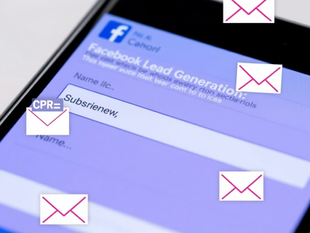
Why Your Facebook Ads Aren’t Converting (And How to Fix Them)
0
0
0

Introduction
You’ve launched your Facebook ad campaign, the clicks are coming in—but your conversions are nowhere to be found. What’s going wrong?
If your Facebook ads aren’t converting, you're not alone. Many businesses face this challenge despite spending hundreds—or thousands—on ad spend. Understanding why your Facebook ads aren’t converting is essential for turning views into sales, leads, or sign-ups.
In this guide, we’ll break down the most common reasons Facebook ads fail to convert and walk you through smart, tactical fixes to get your ROI back on track.
📋 Table of Contents
5. Sample 5-Step Optimization Plan
1. Highlights / Overview
Weak Targeting Strategy
Ads shown to the wrong audience miss the mark.
Why it matters: Even great creatives won’t work if shown to disinterested users.
Quick tip: Use Custom Audiences or Lookalike Audiences based on engaged users.
Poor Creative or Messaging
Uninspiring copy, bland visuals, or generic offers lower engagement.
Why it matters: You need to stop the scroll and speak directly to the user’s pain point.
Quick stat: Facebook ads with video convert 20–30% better than static images.
Bad Landing Page Experience
A mismatch between your ad promise and your website turns users away.
Why it matters: Even if users click, they won't convert if the landing page isn’t aligned.
Quick tip: Keep messaging consistent and reduce load time.
Wrong Optimization Goal
Using the wrong objective (e.g., Traffic instead of Conversions).
Why it matters: Facebook's algorithm won’t optimize properly unless you guide it.
Quick tip: Use the “Conversions” objective with the Facebook Pixel installed.
Budget Mismanagement
Spending too little or too much without data-based scaling.
Why it matters: Budget directly affects the learning phase and optimization.
Quick stat: Scaling should ideally not exceed 20% daily budget increase.
Lack of Testing
Running one ad set without comparing variables.
Why it matters: Without A/B testing, you don’t know what’s working.
Quick tip: Test different creatives, audiences, and placements weekly.
2. In-Depth Breakdown

1. Weak Targeting Strategy
Definition: Poor segmentation of audience based on interest, behavior, or demographics.
Benefits of improvement: Reaching the right users increases relevance score and lowers cost per result.
Fix Tips:
Use Lookalike Audiences built from past converters.
Retarget users who visited specific product pages.
Avoid broad audiences until you’ve gathered sufficient data.
2. Poor Creative or Messaging
Definition: Low-quality visuals or unclear offers reduce user engagement.
Benefits: Strong creatives lead to higher click-through and conversion rates.
Fix Tips:
Use attention-grabbing thumbnails.
Write direct, benefit-focused headlines.
Include social proof or urgency (limited-time offers).
3. Bad Landing Page Experience
Definition: Landing page fails to deliver on the ad’s promise or loads slowly.
Benefits: More users follow through with the intended action.
Fix Tips:
Keep the message and design consistent with your ad.
Use one clear CTA.
Test load speed and mobile responsiveness.
4. Wrong Optimization Goal
Definition: Misaligned campaign objectives reduce ad efficiency.
Benefits: Facebook optimizes delivery for your desired results.
Fix Tips:
Use the “Leads” or “Conversions” goal if you want actions.
Don’t use “Reach” unless doing awareness or retargeting.
Enable event tracking with the Facebook Pixel.
5. Budget Mismanagement
Definition: Ineffective use of daily or lifetime budgets.
Benefits: Better control of spend and performance during the learning phase.
Fix Tips:
Start with a modest budget to test (e.g., $10–$20/day).
Scale slowly based on performance.
Avoid abrupt increases that reset learning.
6. Lack of Testing
Definition: No variation in creatives, copy, or audiences.
Benefits: Identifies what performs best and reduces wasted spend.
Fix Tips:
Use A/B testing in Ads Manager.
Try different visuals, ad copy, and CTAs.
Test one variable at a time for clarity.
3. Practical Tips & Tools
Tools to Use:
Facebook Ads Manager
Meta Business Suite
Canva or Adobe Express for creative design
Google PageSpeed Insights (for landing pages)
Money/Time-Saving Hacks:
Use Dynamic Creative Ads to auto-test combinations.
Duplicate high-performing ad sets instead of starting from scratch.
Set rules in Ads Manager to pause underperformers automatically.
4. Implementation Guide

Step-by-Step Fix Plan:
Audit your targeting—are you reaching the right audience?
Review ad creatives and test multiple variations.
Check your landing page for speed, clarity, and message alignment.
Confirm that your optimization goal matches your campaign intent.
Monitor results in Ads Manager and use performance data to guide scaling.
Run A/B tests to learn what works before scaling further.
Common Pitfalls:
Ignoring performance data.
Failing to retarget or nurture leads.
Making changes too quickly without letting ads optimize.
5. Sample 5-Step Optimization Plan
Week 1: Run 3 versions of your ad (creative/copy) to a cold audience.Week 2: Analyze engagement metrics and pause underperformers.Week 3: Scale the best performer by 20% and launch retargeting ads.Week 4: Test new copy variation on warm leads.Week 5: Review conversions, update landing page, and refine audience.
Pro Tip: Use UTM parameters to track source traffic inside Google Analytics.
6.FAQs
Q1: How long should I let my ad run before making changes?A: At least 3–5 days or until the learning phase ends.
Q2: Can I reuse winning creatives in new campaigns?A: Yes, especially if retargeting a similar audience.
Q3: How do I know if it’s a creative or targeting issue?A: Low CTR often signals creative problems; low conversion rate signals landing page or offer issues.
Q4: What’s a good conversion rate for Facebook ads?A: 2–5% is average, but it varies by industry.
Q5: Should I turn off ads during weekends or holidays?A: Not unless your data shows consistent underperformance during those times.
7. Conclusion : Convert Facebook Ads
If your Facebook ads aren’t converting, don’t panic—optimize. From tightening your audience to improving your creative, small changes can make a big impact.












